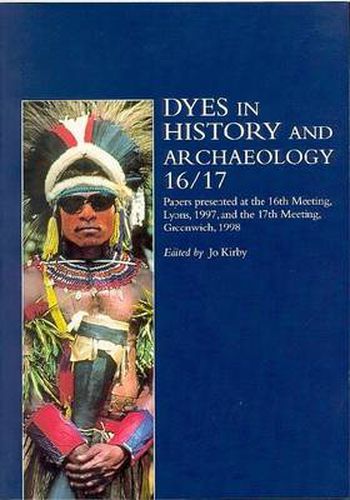Readings Newsletter
Become a Readings Member to make your shopping experience even easier.
Sign in or sign up for free!
You’re not far away from qualifying for FREE standard shipping within Australia
You’ve qualified for FREE standard shipping within Australia
The cart is loading…






Interest in all aspects of dyestuffs has grown considerably since an informal meeting of researchers twenty years ago developed into the annual forum of Dyes in History and Archaeology. Collections of papers from the meetings, including this one, have been published under the same name. Analysis has revealed that the early 20th century clothing and textile designer, Mariano Fortuny, used natural dyes for his glorious silks and cottons. Natural indigo is still used in some parts of the world, but dyeing with it is harder, less pleasant work than is popularly supposed. Species of Coleus - one of which is the flame nettle, a popular houseplant in the West - are used as sources of red, blue, purple and green dyes in Papua New Guinea and other parts of Asia. Research into the history of dyestuffs covers many disciplines. Their chemistry is especially of fundamental interest: the development of synthetic dyes was a breakthrough for chemical technology and industrial processes. Analysis has enabled the identification of historical textiles dyestuffs and paintings pigments.
$9.00 standard shipping within Australia
FREE standard shipping within Australia for orders over $100.00
Express & International shipping calculated at checkout
Interest in all aspects of dyestuffs has grown considerably since an informal meeting of researchers twenty years ago developed into the annual forum of Dyes in History and Archaeology. Collections of papers from the meetings, including this one, have been published under the same name. Analysis has revealed that the early 20th century clothing and textile designer, Mariano Fortuny, used natural dyes for his glorious silks and cottons. Natural indigo is still used in some parts of the world, but dyeing with it is harder, less pleasant work than is popularly supposed. Species of Coleus - one of which is the flame nettle, a popular houseplant in the West - are used as sources of red, blue, purple and green dyes in Papua New Guinea and other parts of Asia. Research into the history of dyestuffs covers many disciplines. Their chemistry is especially of fundamental interest: the development of synthetic dyes was a breakthrough for chemical technology and industrial processes. Analysis has enabled the identification of historical textiles dyestuffs and paintings pigments.